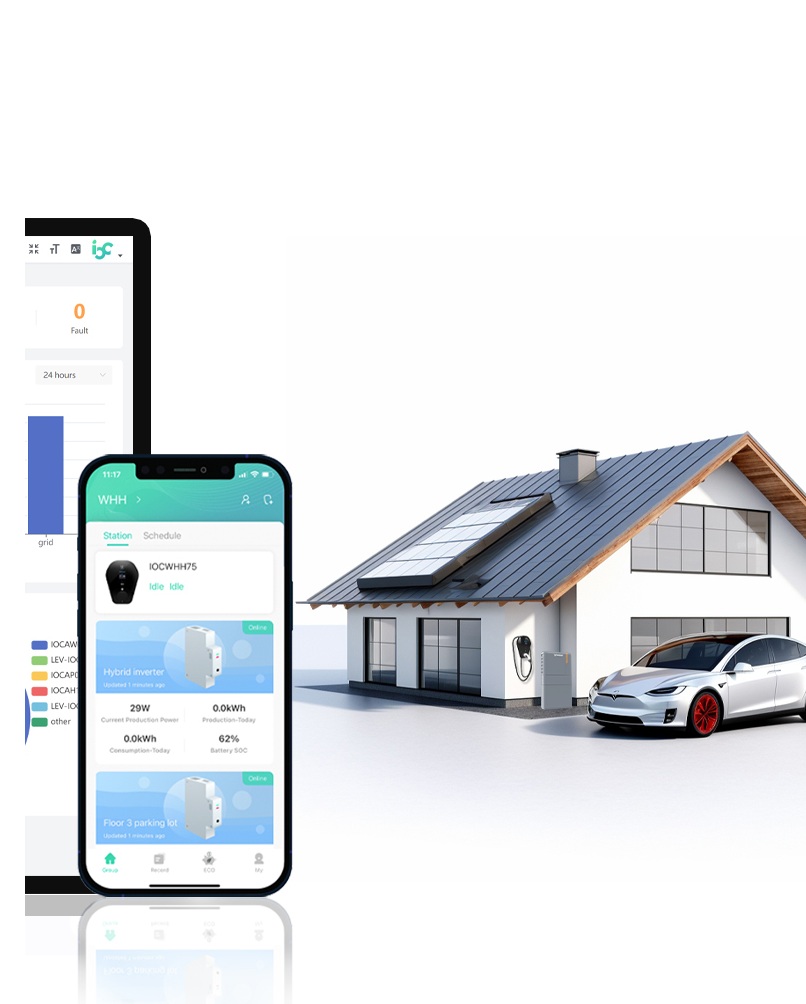The rapid evolution of electric vehicle charging infrastructure has brought unprecedented challenges in managing the thermal dynamics of high-power charging systems. As charging speeds continue to increase toward 350kW and beyond, battery thermal management systems have emerged as the critical bottleneck determining not only charging performance but also battery longevity, safety, and overall system reliability. The intricate dance between electrical energy transfer and thermal dissipation requires sophisticated engineering solutions that must operate seamlessly across varying environmental conditions, usage patterns, and charging protocols. Understanding these thermal management systems is essential for anyone involved in the design, deployment, or operation of modern EV charging infrastructure, as they represent the invisible foundation upon which the entire charging ecosystem depends.
The complexity of thermal management in EV charging extends far beyond simple cooling solutions, encompassing a multidisciplinary approach that integrates advanced materials science, fluid dynamics, control systems engineering, and predictive analytics. Modern battery thermal management systems (BTMS) must simultaneously address multiple competing objectives: maximizing charging speed while preventing thermal runaway, maintaining optimal cell temperatures across large battery packs, minimizing energy consumption of cooling systems, and ensuring consistent performance across millions of charge cycles. These systems operate at the intersection of physics and engineering, where small improvements in thermal efficiency can translate to significant gains in charging speed, battery life, and overall system economics. The sophistication required to achieve these objectives has driven innovations in everything from nano-enhanced coolants to machine learning-based predictive thermal control algorithms.
Thermal Management Fundamentals in High-Power Charging
The fundamental physics governing thermal management in EV charging systems centers around the relationship between electrical resistance, current flow, and heat generation as described by Joule's law, where power dissipation increases with the square of current. During high-power charging events, battery cells experience significant internal heat generation due to both ohmic resistance and electrochemical polarization effects, creating temperature gradients that can reach 20-30°C across individual cells within minutes. This thermal stress not only impacts immediate charging performance but also triggers complex chemical and physical processes within the battery that can permanently degrade capacity and reduce cycle life. The challenge becomes even more complex when considering that optimal charging rates vary significantly with temperature, creating a dynamic optimization problem where thermal management systems must continuously balance heat removal with charging power to maintain cells within the narrow temperature window of 20-35°C for optimal performance.
The thermal behavior of lithium-ion batteries during charging exhibits non-linear characteristics that require sophisticated modeling and control approaches. Thermal runaway represents the most severe consequence of inadequate thermal management, where exothermic reactions within battery cells create a positive feedback loop leading to rapid temperature rise, gas generation, and potential fire or explosion. Prevention of thermal runaway requires not only effective heat removal but also comprehensive monitoring systems capable of detecting early warning signs such as voltage abnormalities, temperature gradients, and gas emissions. Modern thermal management systems employ multiple layers of protection including cell-level temperature monitoring, pack-level thermal modeling, and emergency cooling protocols that can rapidly reduce temperatures in the event of detected anomalies. The integration of these safety systems with charging protocols ensures that power delivery is automatically reduced or terminated before dangerous thermal conditions can develop.

Fast Charging Thermal Challenges and System Limitations
The pursuit of ultra-fast charging capabilities has exposed fundamental limitations in current thermal management approaches, particularly as charging powers approach 350kW and beyond. At these power levels, the rate of heat generation within battery packs can exceed 50kW, requiring cooling systems with unprecedented capacity and efficiency to maintain acceptable operating temperatures. The challenge is compounded by the fact that thermal management systems must operate effectively across a wide range of ambient conditions, from -30°C winter environments to +50°C desert conditions, while maintaining consistent charging performance. Traditional air-cooling systems become completely inadequate at these power levels, necessitating the adoption of liquid cooling systems with complex distribution networks, high-performance heat exchangers, and sophisticated control algorithms that can respond to rapidly changing thermal loads within seconds.
The temporal dynamics of fast charging create additional complications for thermal management system design, as the heating profile during a charging session follows complex patterns dictated by battery state-of-charge, charging protocol, and environmental conditions. During the initial stages of fast charging, when batteries are typically at low state-of-charge, cells can accept high current levels with moderate heating, but as the charging session progresses and cells approach higher state-of-charge levels, internal resistance increases dramatically, causing heat generation to spike even as charging current is reduced. This creates a scenario where thermal management systems must be designed for peak thermal loads that may occur at any point during the charging cycle, rather than simply at maximum power levels. Furthermore, the thermal mass of large battery packs means that temperature changes lag behind power changes, requiring predictive control algorithms that can anticipate thermal conditions and adjust cooling preemptively to prevent temperature overshoot.
Advanced Cooling Technologies and Innovation Frontiers
The evolution of cooling technologies for EV charging applications has progressed from simple air-based systems to sophisticated liquid cooling solutions incorporating advanced materials, innovative heat exchanger designs, and intelligent control systems. Modern liquid cooling systems employ specialized coolants with enhanced thermal properties, including graphene-enhanced fluids that can improve thermal conductivity by up to 40% compared to traditional ethylene glycol solutions. These advanced coolants must simultaneously provide excellent heat transfer characteristics while maintaining compatibility with automotive materials, resisting corrosion and degradation over extended operating periods, and remaining stable across wide temperature ranges. The distribution of coolant throughout battery packs requires careful engineering of flow channels, manifolds, and heat exchange surfaces to ensure uniform cooling while minimizing pressure drops and pumping power requirements.
Emerging cooling technologies are pushing the boundaries of thermal management performance through innovative approaches such as immersion cooling, where battery cells are directly submerged in specialized dielectric fluids that provide superior heat transfer compared to traditional plate-based cooling systems. Immersion cooling systems can achieve thermal resistance values 60-70% lower than conventional cooling approaches, enabling significantly higher charging powers while maintaining optimal cell temperatures. However, these systems require careful consideration of fluid compatibility with battery materials, sealing technologies to prevent contamination, and service procedures that accommodate the presence of cooling fluids. Phase-change cooling systems represent another frontier technology, utilizing materials that absorb large amounts of energy during phase transitions to provide passive thermal buffering during peak charging events, reducing the size and power requirements of active cooling systems while providing backup thermal protection in the event of cooling system failures.

System Integration and Intelligent Control Strategies
The integration of thermal management systems with broader EV charging infrastructure requires sophisticated control strategies that coordinate multiple subsystems while optimizing for performance, efficiency, and longevity. Modern charging systems employ machine learning algorithms that continuously analyze thermal patterns, charging behaviors, and environmental conditions to develop predictive models that can optimize cooling system operation in real-time. These algorithms consider factors such as anticipated charging session duration, battery thermal history, ambient temperature forecasts, and electricity pricing to determine optimal cooling strategies that minimize energy consumption while ensuring safe and efficient charging. The integration extends beyond the vehicle itself to include thermal management of charging station components, cable systems, and power electronics that also generate significant heat during high-power charging operations.
The coordination between thermal management systems and charging protocols represents a critical aspect of modern fast-charging infrastructure, where adaptive charging algorithms continuously adjust power delivery based on real-time thermal conditions across all system components. This dynamic optimization requires seamless communication between vehicle battery management systems, charging station controllers, and grid management systems to ensure that thermal constraints are respected while maximizing charging speed and efficiency. Advanced systems employ predictive thermal modeling that can simulate future thermal states based on current conditions and planned charging profiles, enabling proactive adjustments that prevent thermal limitations from constraining charging performance. The integration of thermal management with predictive maintenance systems also enables early detection of cooling system degradation, allowing for preventive maintenance that avoids unexpected failures and ensures consistent charging performance over the lifetime of the infrastructure.
Future Innovations and Industry Standards Evolution
The future of battery thermal management systems in EV charging infrastructure is being shaped by breakthrough technologies in materials science, artificial intelligence, and systems integration that promise to overcome current limitations while enabling new capabilities. Solid-state battery technologies, which are approaching commercial viability, offer fundamentally different thermal characteristics compared to conventional lithium-ion batteries, with reduced heat generation and improved thermal stability that could revolutionize thermal management requirements. These batteries can potentially operate safely at higher temperatures while generating less waste heat during charging, reducing cooling system complexity and energy consumption. However, solid-state batteries also introduce new thermal management challenges, including the need to maintain optimal operating temperatures for solid electrolyte performance and managing thermal expansion differences between solid components.
The development of industry standards for thermal management systems is evolving to address the increasing complexity and performance requirements of next-generation charging infrastructure. International standards bodies are working to establish comprehensive test procedures, safety requirements, and performance metrics that can ensure interoperability and safety across different manufacturers and applications. These standards must address not only traditional thermal performance metrics but also emerging concerns such as thermal management system cybersecurity, predictive maintenance protocols, and integration with smart grid systems. The future regulatory landscape will likely require thermal management systems to demonstrate not only safety and performance under normal conditions but also resilience against cyberattacks, extreme weather events, and grid disturbances that could impact cooling system operation. As the industry moves toward autonomous charging systems and robotic charging solutions, thermal management standards will need to address the additional complexity of unmanned operation while maintaining the highest levels of safety and reliability.
